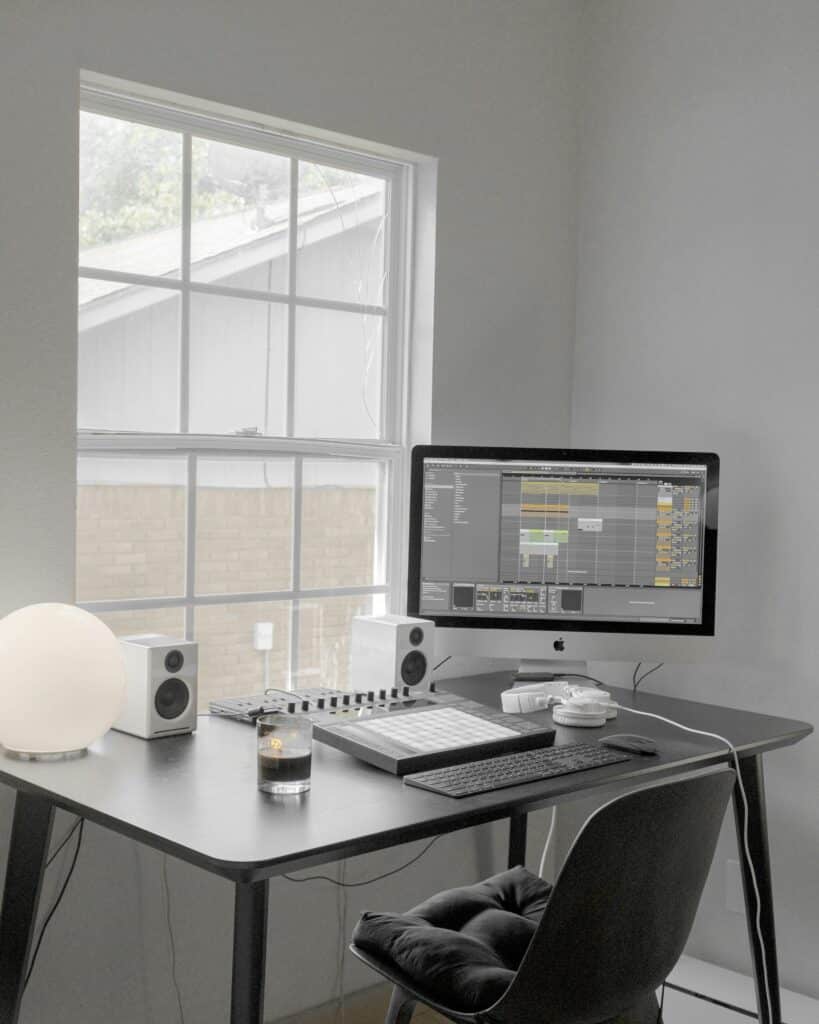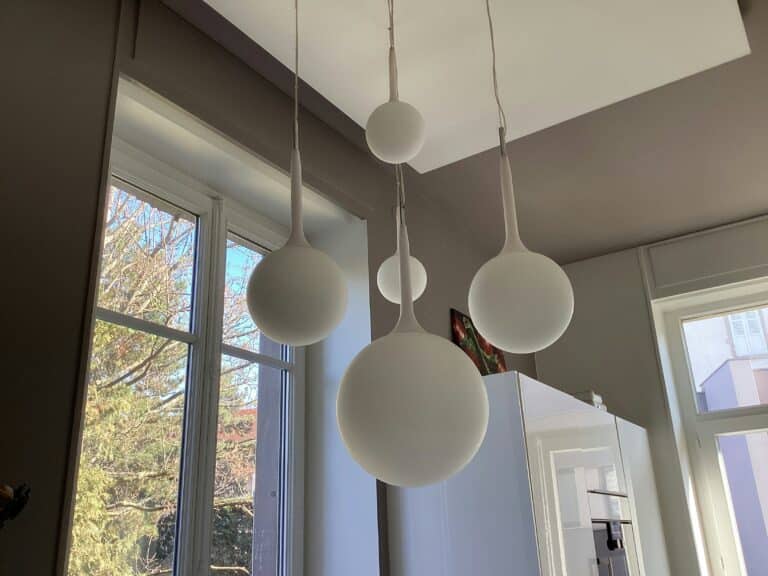Whether you are a freelance graphic designer, a digital nomad, or a remote team manager, your workspace can have a significant impact on your work’s effectiveness and your mental state. This article will guide you through the creation of a minimalist workspace designed for optimal focus and inspiration.

The concept of minimalism 🍃 goes beyond just decluttering your physical space. It’s also about decluttering your mind, enabling you to concentrate on tasks that truly matter. However, achieving this zen-like state in your workspace might seem like a daunting task. But fear not! This comprehensive checklist will guide you through every step to create an efficient, serene, and inspiring workspace, regardless of where you work from.
Let’s dive deep into the philosophy of minimalism and its application in your workspace. We’ll dissect how it can be used to increase productivity, reduce distractions, and inspire creativity. We’ll explore the science behind some of these benefits and share some practical tips and product recommendations to assist you in building your ultimate minimalist workspace. Whether you’re starting from scratch or remodeling an existing workspace, this guide will be your go-to resource.
Why Minimalism?
Before we embark on the journey to minimalism, it’s crucial to understand why it matters. Minimalism as a lifestyle and design choice has gained popularity in recent years for a good reason. It’s a reaction against the clutter, noise, and excess of our modern lives, bringing calm, clarity, and focus.
In a workspace context, minimalism can enhance concentration, improve mental clarity, and boost productivity. How? By reducing visual clutter and distractions, it helps to maintain a clear mind, leaving more room for innovative ideas and problem-solving.
Creating Your Minimalist Workspace: The Basics
Creating a minimalist workspace doesn’t necessarily mean getting rid of everything and working on a bare desk. It’s about surrounding yourself with items that serve a purpose, bring joy, and inspire creativity.
So, how do you create such a workspace? We’ll dive deep into this question in the following sections, discussing practical steps like choosing the right furniture, organizing your digital space, and selecting aesthetic elements to inspire creativity. We’ll also provide specific product recommendations for remote workers seeking a minimalist workspace.
Whether you are designing a home office or optimizing a small corner in your living room, you’ll discover how to create an environment conducive to deep work, creative thinking, and productivity. Stay tuned and prepare yourself for a transformative journey towards minimalism 🚀.
The Ultimate Minimalist Workspace Checklist
The journey towards a minimalist workspace is not a one-size-fits-all solution. It depends on your unique needs, preferences, and type of work. However, there are general principles you can apply, which we’ll explore in the ultimate minimalist workspace checklist. Get ready to embrace the philosophy of ‘less is more’ and create a workspace that promotes focus and creativity.
As we journey through this ultimate minimalist workspace checklist, remember, this is not just about creating a physical space. It’s about creating a mindset that promotes focus, productivity, and creativity. So, buckle up and get ready to streamline your workspace and your work life.
Introduction: Why a Minimalist Workspace?
As a remote creative professional, your workspace is more than just a place to work – it’s a source of inspiration, focus, and productivity. However, if your workspace is cluttered, distracting, or uncomfortable, it can have the opposite effect. This is where minimalism comes in.
A minimalist workspace is a clean, clutter-free, and organized environment designed to maximize focus and minimize distractions. It’s not about having the least amount of things possible, but rather about only keeping the things that serve a purpose or bring joy. This might seem like a daunting task, but with this ultimate minimalist workspace checklist, you’ll be well on your way to creating a workspace that enhances your creativity and productivity.
So, let’s dive in and explore how you can streamline your space for maximum focus and inspiration. We will start by discussing the importance of ergonomics in your workspace, move on to the key elements of a minimalist workspace, and finally, provide a step-by-step checklist to help you create your ideal minimalist workspace.
The Importance of Ergonomics in Your Workspace
Before we get into the details of creating a minimalist workspace, it’s essential to understand the role of ergonomics. Ergonomics is the study of how people interact with their environment, especially in relation to their workspace. It involves designing or arranging workplaces, products, and systems so that they fit the people who use them.
Good ergonomics can lead to increased productivity, better health, and overall well-being. Conversely, poor ergonomics can result in discomfort, injury, and decreased productivity. Therefore, it is critical to consider ergonomics when designing your minimalist workspace.
Key ergonomic considerations include your desk, chair, monitor, keyboard, and mouse. Here’s a comparative table that shows how to choose ergonomic options:
| Item | Ergonomic Options | Considerations |
|---|---|---|
| Desk | Adjustable standing desk | Allows for a variety of postures throughout the day |
| Chair | Ergonomic chair | Supports lower back, promotes good posture |
| Monitor | Monitor arm | Positions monitor at eye level to reduce neck strain |
| Keyboard | Ergonomic keyboard | Minimizes wrist strain |
| Mouse | Ergonomic mouse | Prevents wrist and hand strain |
For more information on ergonomic setups, check out the video titled “Ultimate Desk Setup – Ergonomics” by the YouTube channel “Mattias Burling”.
Key Elements of a Minimalist Workspace
A minimalist workspace is more than just a clean and clutter-free desk. It involves several key elements that come together to create an environment that promotes focus, inspiration, and productivity. Here are the essential elements of a minimalist workspace:
- Decluttered Space: A clutter-free desk is the cornerstone of a minimalist workspace. It’s not just about physical clutter, but also digital clutter. Regularly clean up your digital files and keep your computer desktop clean and organized.
- Simplified Tools: Choose tools that serve multiple purposes to reduce clutter. For instance, a tablet that can also serve as your computer and sketchpad.
- Minimal Decor: Keep decor to a minimum and choose items that inspire creativity, such as a piece of art or a plant.
- Natural Light: Natural light is essential for a minimalist workspace. It not only reduces eye strain but also improves mood and productivity. If you can’t get natural light, invest in a good quality desk lamp that mimics natural light.
- Organized Storage: Use simple and efficient storage solutions to keep your workspace clutter-free. This could be a simple drawer system or even a digital storage solution.
Step-by-step Minimalist Workspace Checklist
Now that you understand the importance of ergonomics and the key elements of a minimalist workspace, here’s a step-by-step checklist to help you streamline your space.
1. Remove Everything: Start by clearing out your entire workspace. This helps you see what you have and what you really need.
2. Assess Your Items: Go through each item and ask yourself if it serves a purpose or brings you joy. If it doesn’t, get rid of it.
3. Choose Your Tools Wisely: Select tools that serve multiple purposes to reduce clutter.
4. Arrange Your Space Ergonomically: Refer back to the ergonomic options table and arrange your workspace for optimal comfort and productivity.
5. Lighting: Ensure you have good lighting, preferably natural light. If not, invest in a quality desk lamp.
6. Decorate Minimally: Add minimal decor that inspires creativity, such as a piece of art or a plant.
7. Organize Your Storage: Set up simple and efficient storage solutions, both physical and digital.
8. Maintain Your Space: Regularly clean and declutter your workspace to maintain its minimalistic appeal.
By following this checklist, you can create a minimalist workspace that not only looks good but also enhances your focus and productivity. Remember, minimalism is about simplicity, purpose, and joy. So, create a workspace that reflects these values and supports your creative process.
For a visual guide on setting up a minimalist workspace, watch the YouTube video titled “My Minimalist Workspace – Simple, Productive and Inspiring” by the channel “Matthias from minimalist.”
Conclusion
In concluding this technical discourse on the principles and applications of Software Engineering, it becomes imperative to reiterate the key points discussed in this piece. Software Engineering is an essential discipline in our tech-driven world, as it lays the foundation for creating and managing robust software systems. It helps in enhancing the productivity of programmers, maintaining software quality, and ensuring the effective execution of complex software projects.
We began by highlighting the significance of the Software Development Life Cycle (SDLC), a cornerstone in the field of Software Engineering. The SDLC provides a well-structured framework for developing high-quality software. It encompasses distinct phases including requirement gathering, system design, implementation, testing, deployment, and maintenance. Each of these phases, as we noted, plays a pivotal role in shaping the final product.
Moreover, we delved into the various software development models, such as the Waterfall Model, Agile Model, Spiral Model, and Iterative Model, among others. These models present different approaches to software development, each with its strengths and limitations. Your choice of model largely depends on the project requirements, resources, and time constraints.
Additionally, we ventured into the realm of software testing, a crucial aspect of Software Engineering. We outlined the importance of different testing techniques like unit testing, integration testing, system testing, and acceptance testing. These methods help in detecting and rectifying errors, thus ensuring the smooth functioning of the software.
We also explored the significance of software maintenance in preserving and enhancing the value of software over time. We discussed the various types of maintenance: corrective, adaptive, perfective, and preventive, which help in the continual improvement of the software.
Finally, we touched upon some advanced topics in Software Engineering, such as software metrics, software reliability, and software reusability. These concepts help in the quantitative assessment of software quality, prediction of system performance, and promotion of code reuse, respectively.
This article should serve as a comprehensive guide to the multifaceted discipline of Software Engineering. The knowledge and insights provided herein are intended to broaden your understanding and appreciation of this critical field. Given the rapid technological advances and the increasing dependence on software in all walks of life, proficiency in Software Engineering is a highly sought-after skill.
In line with this, I urge you to delve deeper into the subject, apply the concepts and techniques discussed here in your projects, and contribute to the growing body of knowledge in Software Engineering. I look forward to hearing about your experiences, and please feel free to share your thoughts, insights, and queries in the comments section below. 😊
Remember, sharing is caring! 🤝 So, if you found this article helpful, don’t hesitate to share it with your friends and colleagues. Also, do not forget to subscribe to our newsletter for more enriching content.
Finally, for further reading, you can visit the [IEEE Computer Society’s website](https://www.computer.org/technical-committees/software-engineering/) or the [ACM Special Interest Group on Software Engineering](https://www.sigsoft.org/).
Happy learning! 💡
[Reference Source](https://www.sciencedirect.com/science/article/pii/S0065245818300179)



